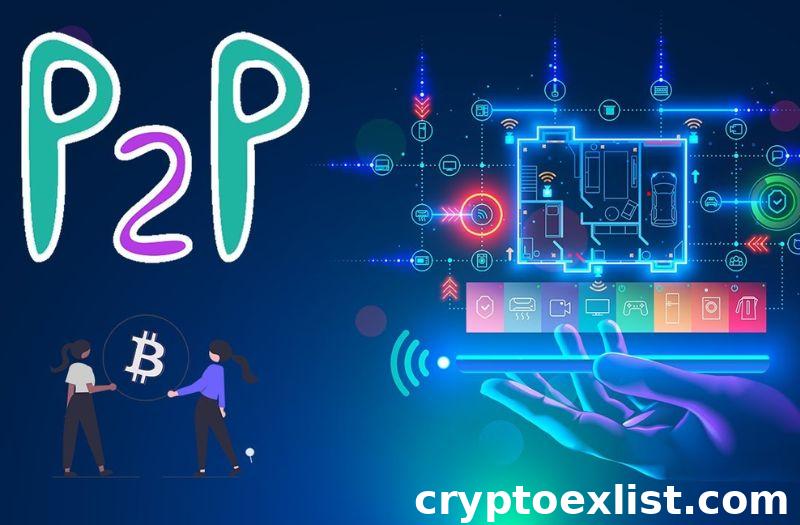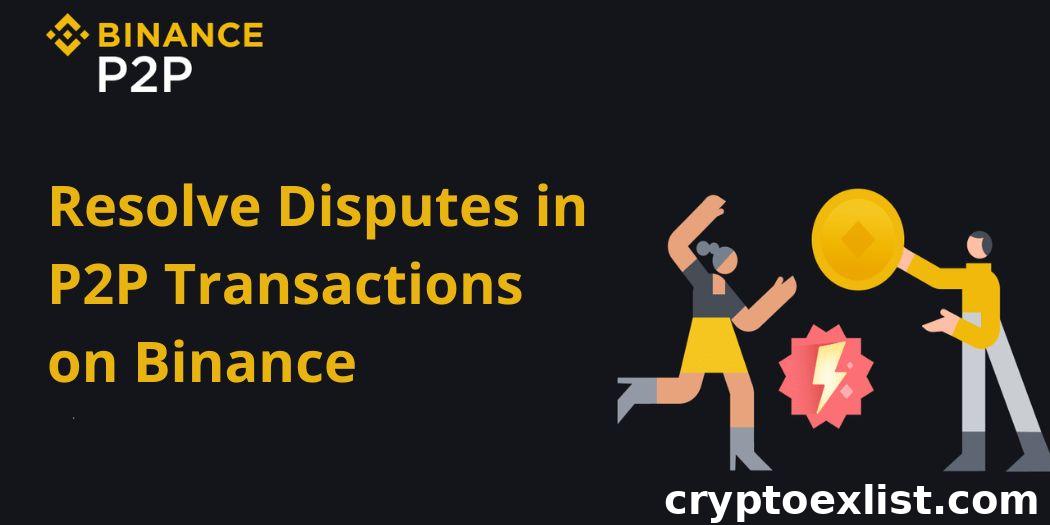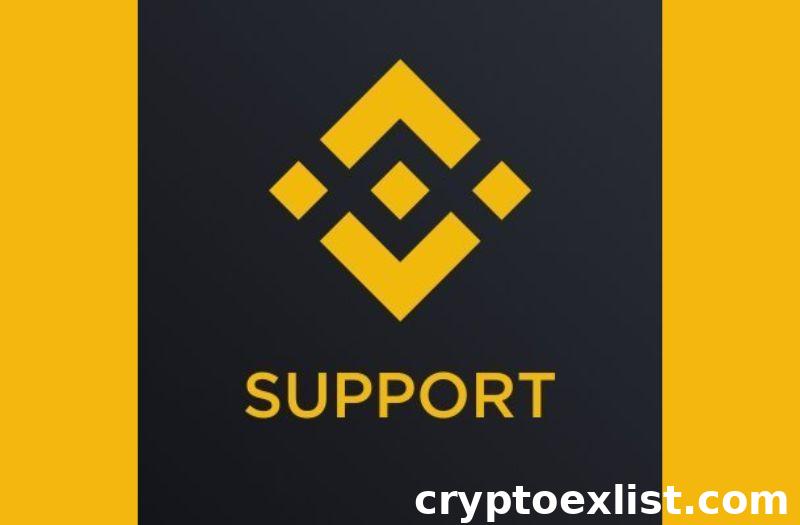
Peer-to-Peer (P2P) trading on Binance provides a flexible and secure way to buy and sell cryptocurrency directly with other users. However, like any trading system, issues can sometimes arise, such as payment delays or transaction errors. Understanding how Binance’s P2P dispute resolution system works is essential for navigating these challenges effectively. This guide covers the basics of P2P transactions, common problems traders face, and how to resolve disputes using Binance’s robust support tools and dispute resolution regulations.
Understanding P2P Transactions
As cryptocurrency grows in popularity, Peer-to-Peer (P2P) trading has become a go-to method for many traders looking to buy and sell digital assets directly with others. Binance’s P2P platform offers users a flexible and secure environment for these types of transactions, making it an excellent choice for both beginners and experienced traders alike. Let’s break down what P2P trading is, how Binance facilitates these transactions, and the unique benefits you can expect when trading on Binance.
How Binance Facilitates P2P Transactions
Binance has simplified the process of P2P trading by offering a secure, user-friendly platform where buyers and sellers can connect. Binance P2P acts as a marketplace that allows users to post offers to buy or sell cryptocurrency, specifying their preferred price and payment method. Once both parties agree to the terms, Binance’s built-in escrow service holds the cryptocurrency until the payment is confirmed, protecting both parties from fraud. This ensures that the buyer cannot receive the crypto until the payment has been made, and the seller is guaranteed to get their funds. Binance also supports multiple payment methods, including bank transfers, e-wallets, and even cash in some regions, making the platform accessible to users worldwide.
Benefits of P2P Trading on Binance
There are several benefits to using Binance P2P for your cryptocurrency trades. First, Binance’s escrow service adds an essential layer of security, ensuring that both buyers and sellers are protected throughout the transaction. Second, Binance P2P offers low fees or, in some cases, no fees at all, making it a cost-effective option for traders. Another key advantage is the flexibility in payment options—Binance supports a wide range of local and global payment methods, allowing users to choose what works best for them. Lastly, the platform’s global reach enables traders from different countries to connect and trade seamlessly, breaking down barriers to financial inclusion and creating opportunities for people in regions with limited access to traditional banking systems.

Common Issues in P2P Transactions
While Peer-to-Peer (P2P) trading on platforms like Binance offers flexibility and control, it’s important to be aware of some common issues that can arise during transactions. Understanding these potential problems can help you navigate the process more smoothly and avoid unnecessary risks. Below, we’ll cover some of the most frequent challenges in P2P transactions and how you can mitigate them.
Payment Delays
One of the most common issues in P2P trading is payment delays. Since P2P transactions often involve bank transfers, mobile wallets, or other external payment methods, the speed of payment can vary depending on the service used. Delays may occur due to bank processing times, especially during weekends or public holidays. As a trader, it’s important to communicate clearly with your counterparty about expected payment timelines. Binance’s P2P platform provides a window of time for completing payments, but if a delay occurs, you can use the built-in chat feature to keep your trading partner informed. Should the payment exceed the allowed time, Binance offers dispute resolution services to help both parties resolve the issue fairly.
Incorrect Transaction Amounts
Another issue that can arise during P2P trading is the incorrect transfer of funds—either sending too much or too little cryptocurrency or fiat currency. This mistake often happens due to miscalculations, typing errors, or misunderstandings between the buyer and seller. To avoid this, double-check all amounts before confirming a trade. Binance P2P makes it easy to review the transaction details before proceeding, ensuring that both parties agree on the correct amount. If an incorrect amount is transferred, it’s crucial to contact the other party immediately and work towards a resolution. In cases where a solution cannot be reached, Binance’s customer support team can step in to mediate.
Account Verification Problems
Account verification is an essential part of the P2P trading process, but issues can arise if your identity verification (KYC) is incomplete or incorrect. Binance requires users to go through a Know Your Customer (KYC) process to verify their identity before trading, which helps ensure a secure environment. Problems with verification usually stem from submitting incorrect or expired documents, blurry images, or inconsistencies in the information provided. To avoid delays, make sure to upload clear, accurate documents and follow all instructions carefully. In the case of an issue, Binance’s support team is available to help you resolve any verification problems quickly, so you can continue trading without interruptions.
Scams and Fraudulent Activities
Unfortunately, scams and fraudulent activities can occur in P2P trading, particularly when trading with unfamiliar parties. Common scams include buyers submitting fake payment proofs or attempting to reverse payments after receiving the cryptocurrency. On Binance P2P, the escrow system is designed to prevent such fraud by holding the cryptocurrency until the payment is confirmed by both parties. Always trade with verified users who have good ratings and reviews, and avoid conducting transactions outside of Binance’s platform to minimize risks. If you suspect fraudulent behavior, report the user immediately, and Binance’s security team will take action to protect you and other traders.

Steps to Take When a Dispute Arises
In the world of Peer-to-Peer (P2P) trading, disputes can occasionally occur, whether it’s due to payment delays, misunderstandings, or other issues. If you’re new to Binance P2P trading, knowing how to handle these disputes efficiently is key to protecting your assets and ensuring a positive trading experience. Below, we outline the steps to take when a dispute arises, from initiating communication with the other party to using Binance’s dispute resolution tools effectively.
Initial Communication with the Other Party
The first step when a dispute arises in a P2P trade is to communicate directly with the other party involved. Often, issues can be resolved through a simple conversation, whether it’s clarifying payment details or confirming the correct amount. Binance P2P provides a built-in chat feature that allows traders to discuss transaction details securely and resolve any potential misunderstandings. Keep your communication polite and professional, and explain the issue clearly to avoid further confusion. Many disputes can be settled without the need for escalation by maintaining open and timely communication. If the issue persists, you can then proceed to the next step.
Using Binance’s Dispute Resolution Tools
If communicating with the other party does not resolve the issue, Binance P2P offers robust dispute resolution tools to assist traders. To initiate a dispute, you can use the “Dispute” button within the trade window, which will alert Binance’s customer support team. Binance will then step in to mediate between the buyer and seller, reviewing all relevant transaction details, including payment evidence, chat logs, and trade history. The platform’s built-in escrow service plays a crucial role here, as it holds the cryptocurrency until the dispute is resolved, ensuring that neither party loses out unfairly. Binance’s dispute resolution tools are designed to provide an impartial solution that protects both buyers and sellers, so you can feel confident that your issue will be addressed fairly.
Documenting the Dispute
Proper documentation is essential when a dispute arises. Collect and save all relevant information regarding the transaction, including screenshots of payment confirmations, chat conversations, and any other evidence that supports your case. Binance’s support team will likely request these documents to help determine the outcome of the dispute. By providing clear and accurate documentation, you’ll be able to support your claims and expedite the resolution process. Keeping organized records of your transactions, even those that go smoothly, is a good practice that can help you avoid complications in the future.
Utilizing Binance’s Support System
When engaging in Peer-to-Peer (P2P) trading, having access to a reliable support system is essential, especially when issues arise that need immediate attention. Binance offers a comprehensive support system that allows traders to quickly resolve problems, from simple questions to more complex disputes. For newcomers to Binance P2P, understanding how to use the platform’s support system can ensure a smooth and efficient trading experience. Below, we explain how to open a support ticket, the expected response times, and the key information to provide to ensure your issue is resolved promptly.
How to Open a Support Ticket
Opening a support ticket on Binance is a straightforward process. If you encounter an issue during a P2P transaction, whether it’s related to payment delays, disputes, or platform-related technical issues, you can reach out to Binance’s support team through their help center. Simply log in to your Binance account, navigate to the “Support” or “Help” section, and follow the prompts to open a support ticket. You will be asked to select the category that best matches your issue, such as P2P trading, account verification, or payment problems. Providing detailed information from the start can help Binance route your ticket to the appropriate team for faster resolution.
Expected Response Times from Support
One common question from traders, especially newcomers, is how long it takes for Binance’s support team to respond. Response times can vary depending on the complexity of the issue and the current support ticket volume, but Binance aims to address most P2P-related inquiries within 24-48 hours. For urgent matters, such as disputes or security issues, Binance’s support team prioritizes those tickets to ensure timely assistance. While waiting for a response, you can track your ticket’s progress through the help center. Binance also provides helpful resources in their FAQ section, which may offer immediate answers to common questions while you await a more personalized response.
What Information to Provide to Support
To speed up the resolution of your issue, it’s essential to provide Binance support with as much relevant information as possible. When submitting a ticket, include details such as your account information, the transaction ID, screenshots of the issue (for example, payment confirmations or chat logs with the other party), and a clear description of the problem. If the issue involves a dispute, make sure to include all evidence that supports your claim, such as proof of payment or communication records. By providing detailed and accurate information upfront, you reduce the back-and-forth and increase the likelihood of a quick resolution.

Dispute Resolution Regulations
When engaging in Peer-to-Peer (P2P) trading on Binance, disputes can occasionally arise due to misunderstandings, payment issues, or differences in expectations between buyers and sellers. In these situations, Binance’s robust dispute resolution process plays a critical role in ensuring fair outcomes for both parties. Understanding the platform’s dispute resolution regulations will not only protect you as a trader but also help you navigate the system efficiently if a problem arises during a transaction.
How Dispute Resolution Works
Binance’s dispute resolution regulations are designed to protect both buyers and sellers by offering a structured process for resolving disagreements. When a dispute arises, either party can initiate the dispute process directly from the P2P trade window. Once a dispute is opened, Binance steps in as a neutral party to mediate the situation. The platform’s escrow service is particularly useful in this process, as it holds the cryptocurrency involved in the trade until the dispute is resolved, ensuring that neither party can unjustly lose funds. Binance’s dispute resolution team reviews the evidence provided by both sides, including payment confirmations, chat logs, and any relevant screenshots, before making a final decision. The process is designed to be fair, transparent, and timely, offering users peace of mind in case a dispute arises.
Adhering to Platform Rules
To ensure smooth and fair dispute resolution, it’s important to adhere to Binance’s P2P trading regulations from the start. One of the key rules is ensuring that all communication and payments remain within the Binance platform. Avoid taking the transaction outside of the platform, as this could disqualify you from Binance’s dispute resolution protection. Additionally, ensure that you follow the trading terms agreed upon, such as the price, payment method, and transaction timeline. By sticking to Binance’s guidelines, you increase the likelihood of a favorable outcome in case a dispute needs to be resolved.
Fair Decision-Making Process
Binance’s dispute resolution regulations emphasize fairness and transparency in decision-making. When resolving a dispute, the platform carefully reviews all evidence, including the trade’s details, communication logs, and payment verification. The final decision is based on this evidence, ensuring that both parties are treated fairly. Binance provides clear guidelines on how to present evidence during the dispute process, so it’s important to keep detailed records of your transactions, including screenshots and payment receipts. In cases where there are delays or non-compliance with the trade terms, Binance’s team will rule in favor of the party that adhered to the agreed-upon terms, further ensuring trust and fairness in P2P trading.
Conclusion
Navigating disputes in P2P trading on Binance can be straightforward when you’re familiar with the platform’s processes and tools. By understanding common issues, engaging in clear communication, and leveraging Binance’s support system, traders can quickly resolve most problems. Additionally, Binance’s fair and transparent dispute resolution regulations ensure that both buyers and sellers are protected. With these strategies in mind, you can confidently trade on Binance P2P, knowing that a system is in place to safeguard your transactions and provide timely assistance when needed.























